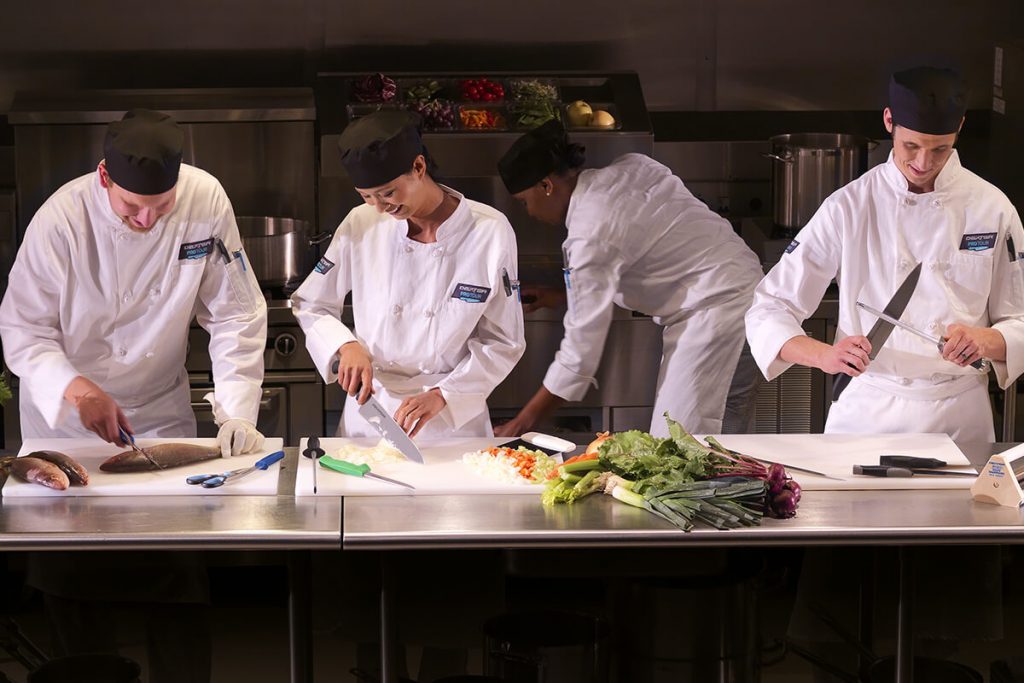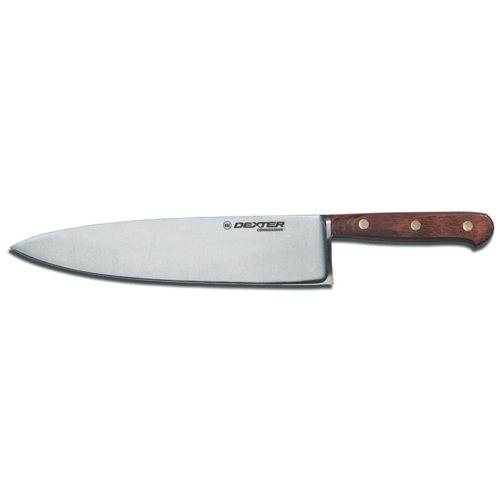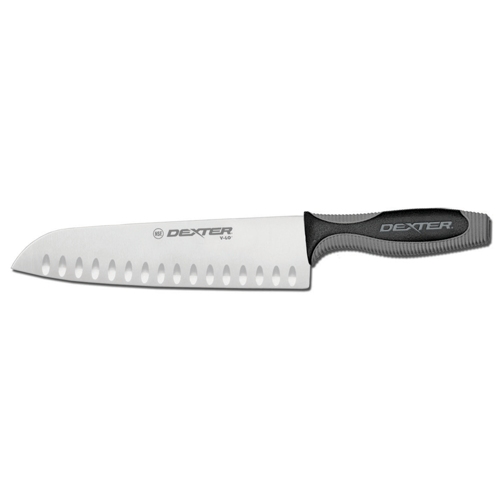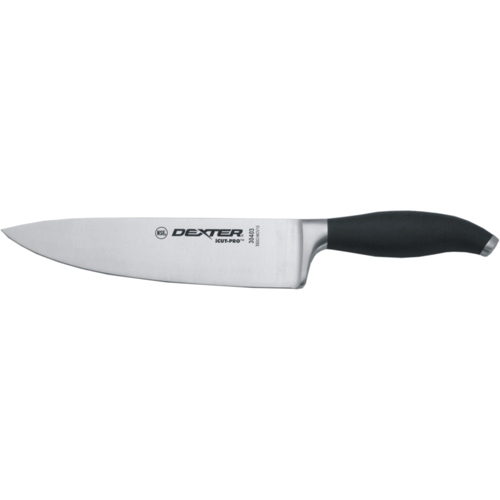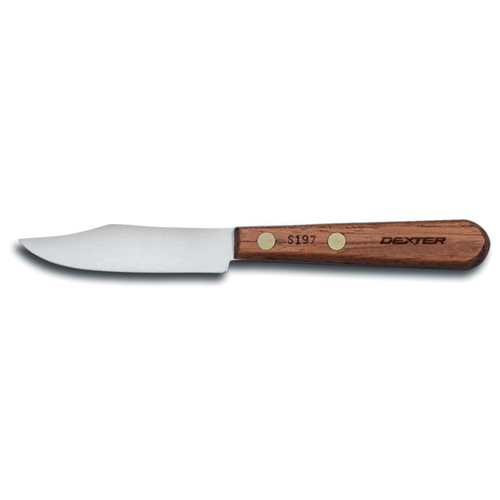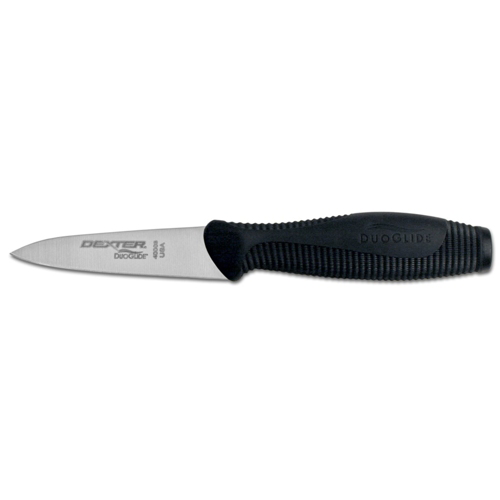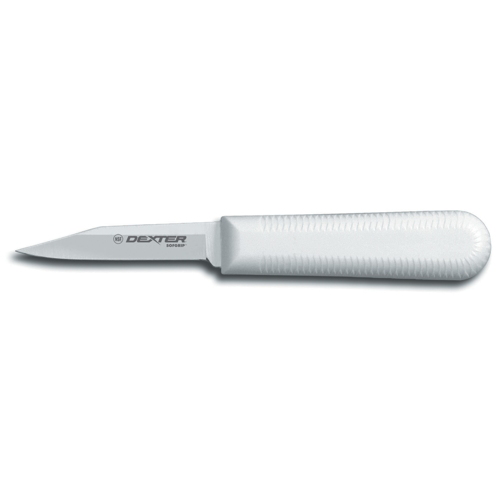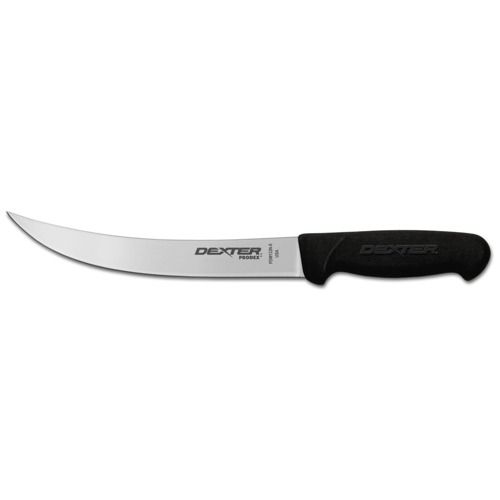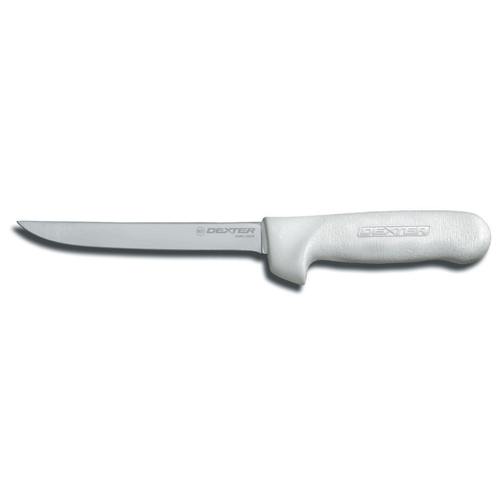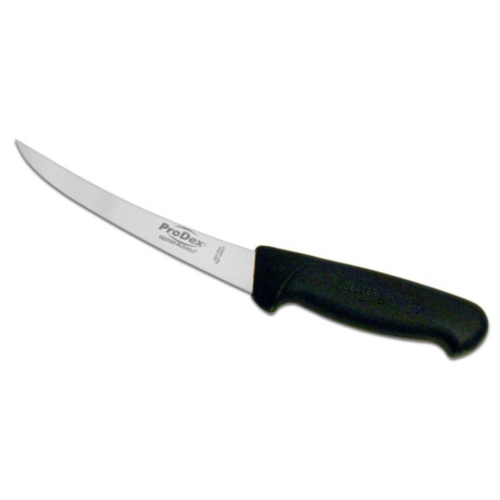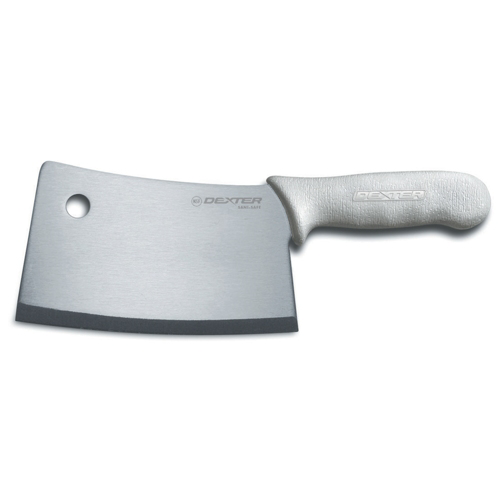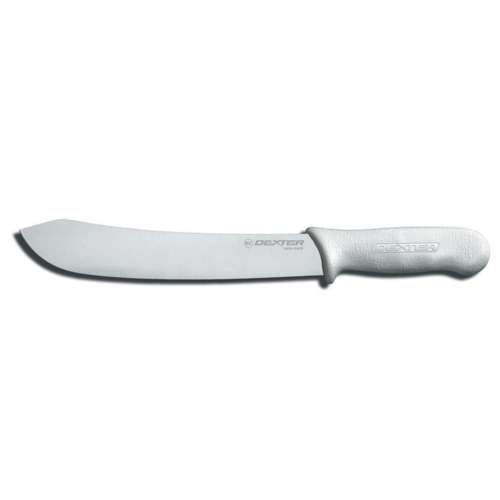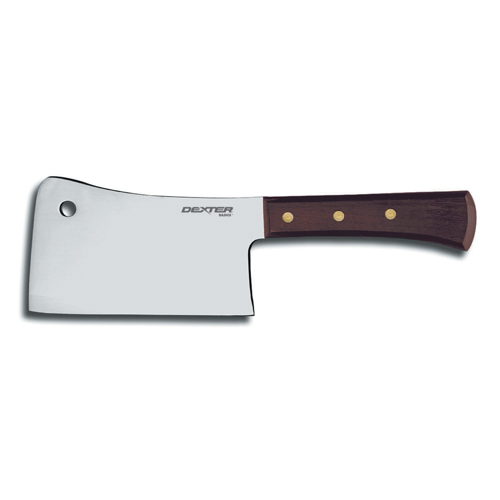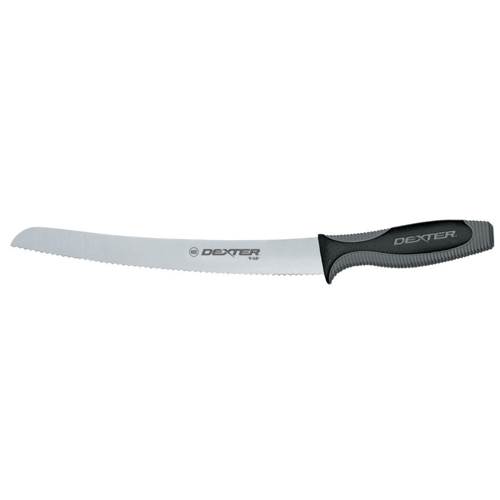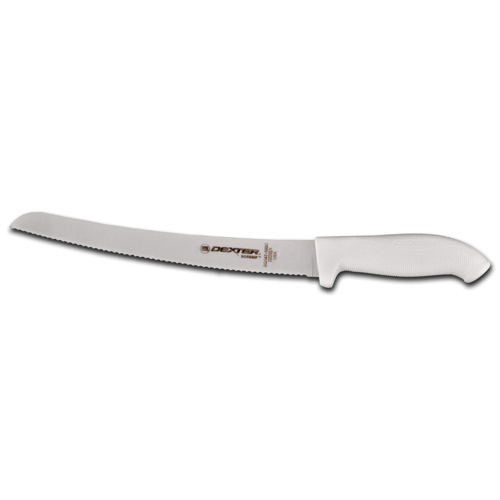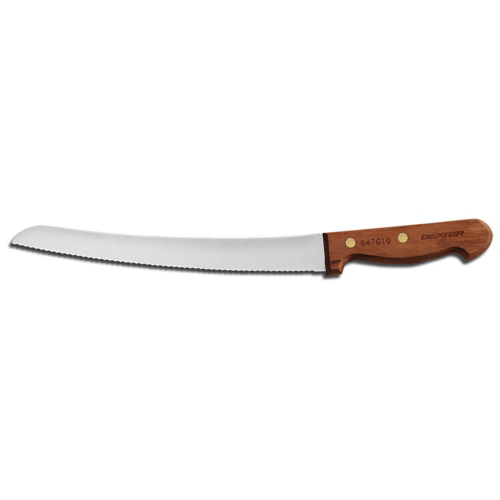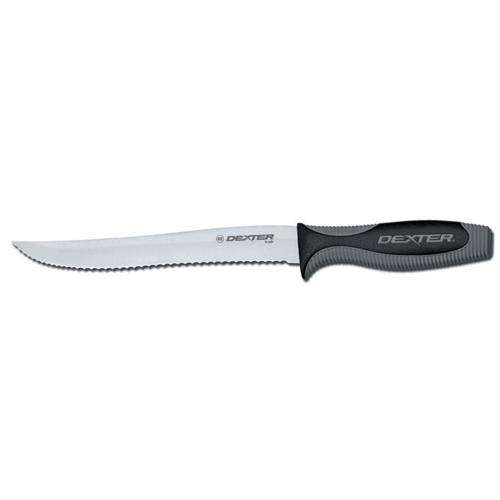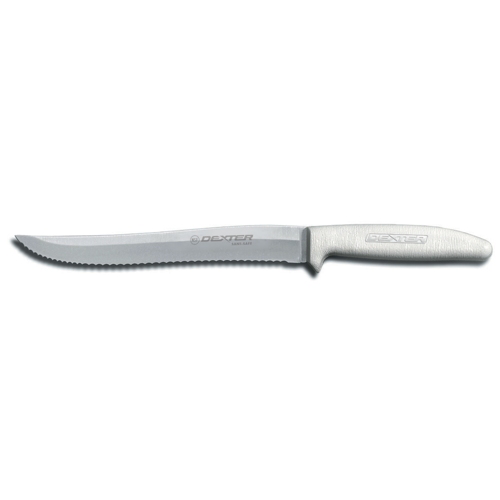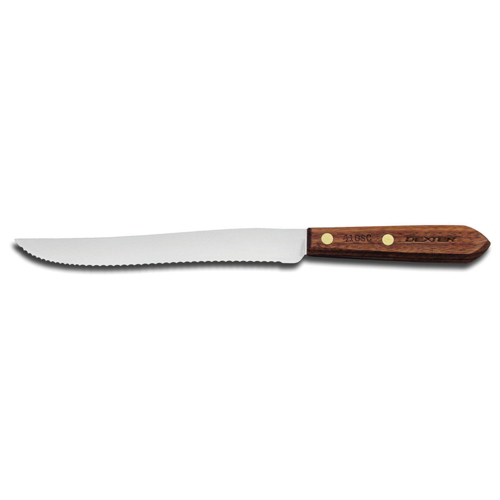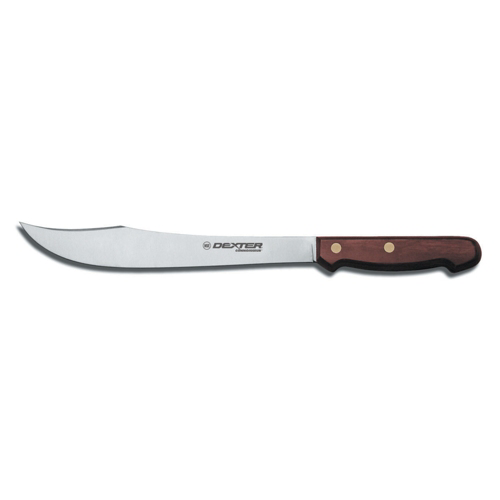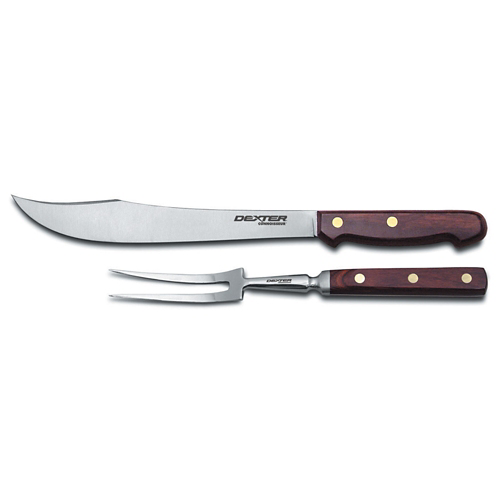There are many factors involved in choosing professional cutlery for a commercial kitchen. Do you know which knives you should have for each cutting task? Are you familiar with blade edge types? How do knife handles impact chef hands over time? This guide is all you need for your next cutlery purchase at Wasserstrom.
Choose Dexter cutlery for its affordability, wide range of knife options, and time-tested performance since 1818. All Dexter knives are made in the USA.
Professional Knife Types
Chef’s Knife
Available in lengths for 6″ to 12″, this knife has more uses than any other knife in the kitchen. The blade is wide at the handle and tapers to a point. When properly used, the chef positions the point of the knife on the cutting board beyond the food to be diced or sliced and, without lifting the point, works the knife in a rocking motion to cut evenly and rapidly.
Paring Knife
Four styles of paring knives are most common: curved, spear, sharp, and clip point. Delicate pepper rings, finely sliced or slivered olives or cherries, can be done with a curved or sharp point paring knife to dress up fancy salads. A cook’s paring, or spear point knife, can be used to remove corn from the cob, peel fruit or vegetables, cut beans, etc. The clip point is used for eyeing potatoes, seeding, peeling, and pitting.
Boning Knife
Blades vary in length from 4″ to 8″. Many cooks simplify carving and get extra servings by boning out a roast when it is partially cooked. For boning roasts, whole hams, lamb legs, veal legs, and filleting fish, a narrow flexible blade is best. The wider stiff blade is used for cutting raw meat and many other trimming operations on less thick cuts of meat.
Color-Coded Knives Explained >
Butcher Knives & Cleavers
For the odd jobs in the kitchen, the butcher and cimeter steak knives can be used for dicing salt pork, cubing cooled meats, cutting steaks or trimming raw meat. Many cooks substitute the favorite forged cook’s knife for jobs normally done with these knives. The cleaver is used for opening lobsters, cutting poultry, and removing joints.
Bread Knife
Don’t underestimate the importance and utility of a bread knife! Scalloped edges are ideal for sawing through thick crusts without tearing the bread underneath. Bread knives – and other scalloped edge knives – are also useful for cutting fruits and vegetables that have skins that easily bruise
Utility Knife
A sharp 6″ utility knife is most efficient for slicing non-solid fruits and vegetables, such as tomatoes or squash. For acidic fruits, a stainless steel blade is preferred. Useful for cutting large melon rings, preparing cabbage for shredding, halving grapefruits and oranges, etc.
Slicers & Carvers
The most important carving knife is the roast beef slicer, most often used to carve rounds, boneless roasts, boiled briskets, pot roasts, butt roasts, and standing rib roasts. The narrow cold meat slicer or ham slicer is used to slice ham or leftover cold roasts of all kinds. The wide, stiff blade does a better job on hot meats, whereas the narrow, more flexible blade cuts cold meat more efficiently. Although there are many patterns to select from, a slicer or carver should have adequate length to permit smooth slicing action.
Explore Dexter Brands >
Dexter Knife Edge Types
Straight Edge
Straight or plain edges are designed to cut without tearing or shredding.

Scalloped Edge
Scalloped edges feature many curved edges protected by sharp points that help to break through tough skins or hard crusts. As these points break through, the curved edges slice the soft interior without damaging it.

Duo Edge
Duo-edges feature alternating kuhlen, or hollow ground ovals, that allow air and juices to enter the cut to reduce friction and make slicing easier.

Tiger Edge
The Tiger edge is a form of scalloped edge and is designed for the aggressive cutting of frozen foods. It is also very popular in the fishing industry for the cutting of bait fish and sawing through cartilage.


